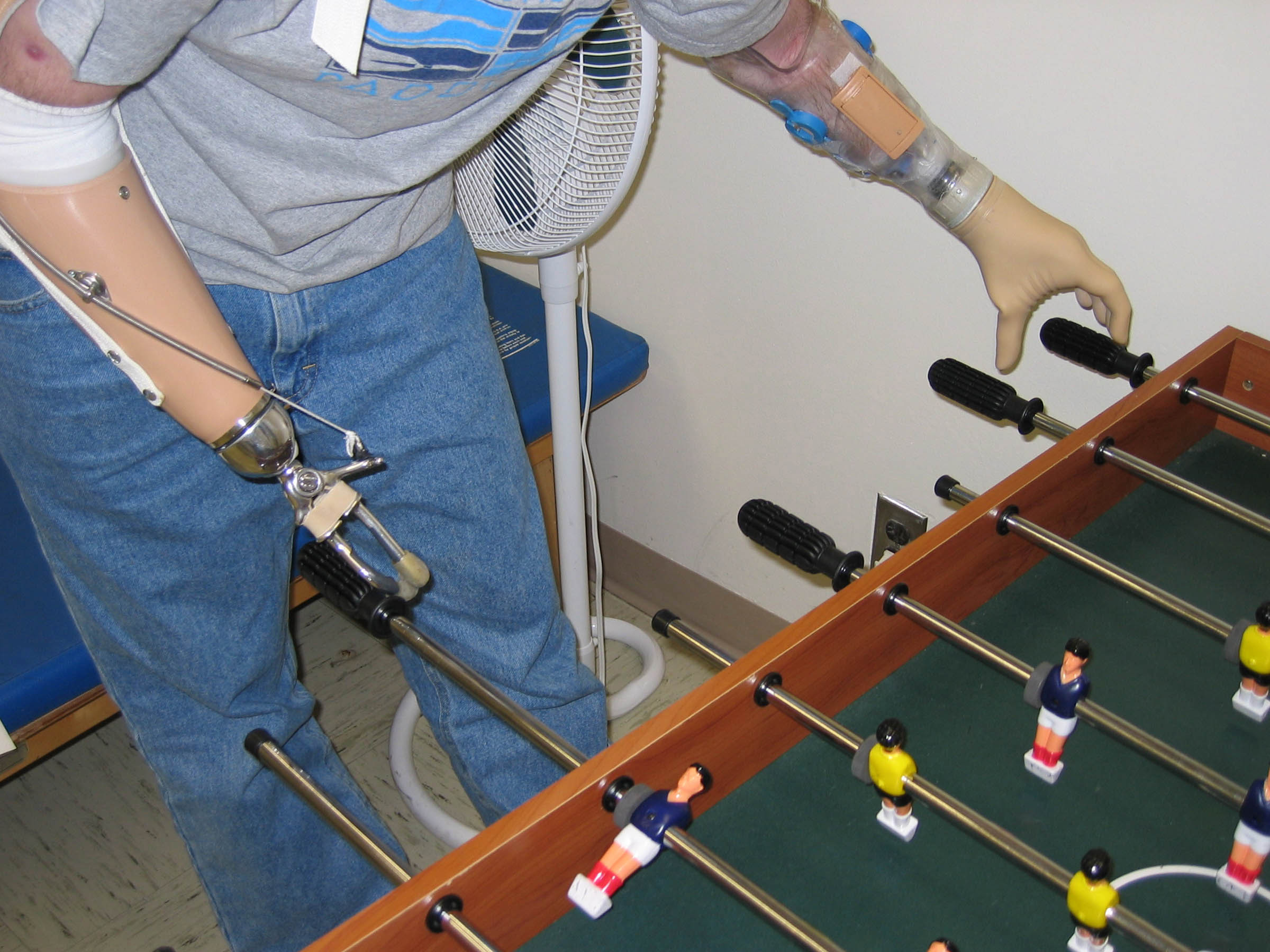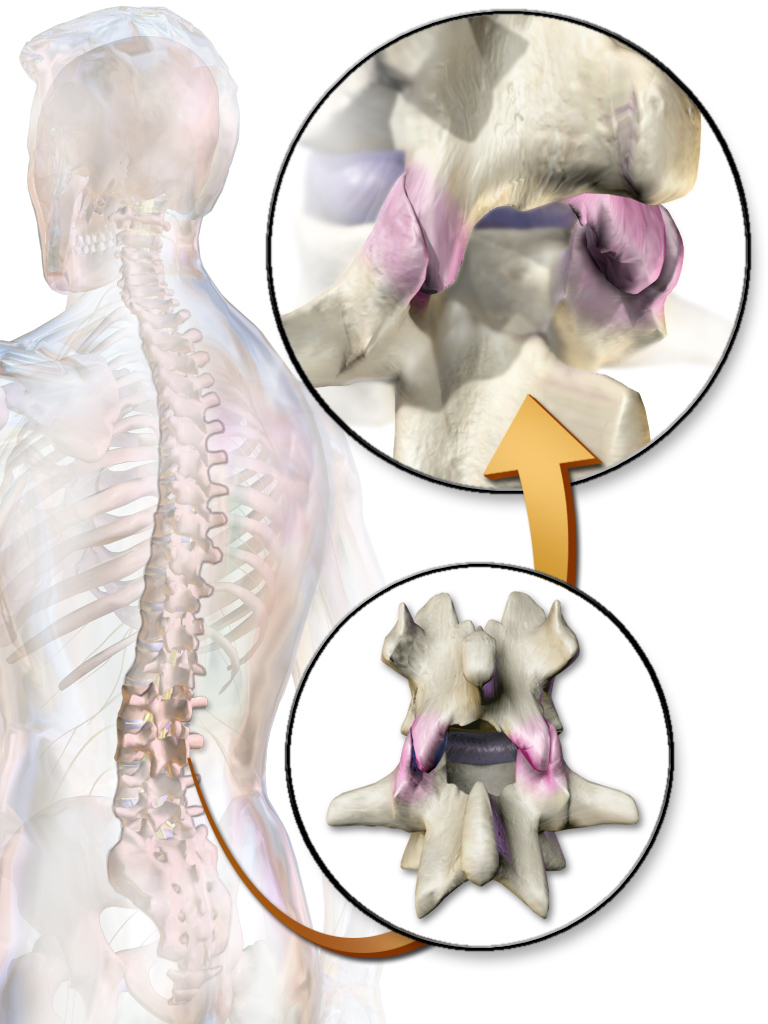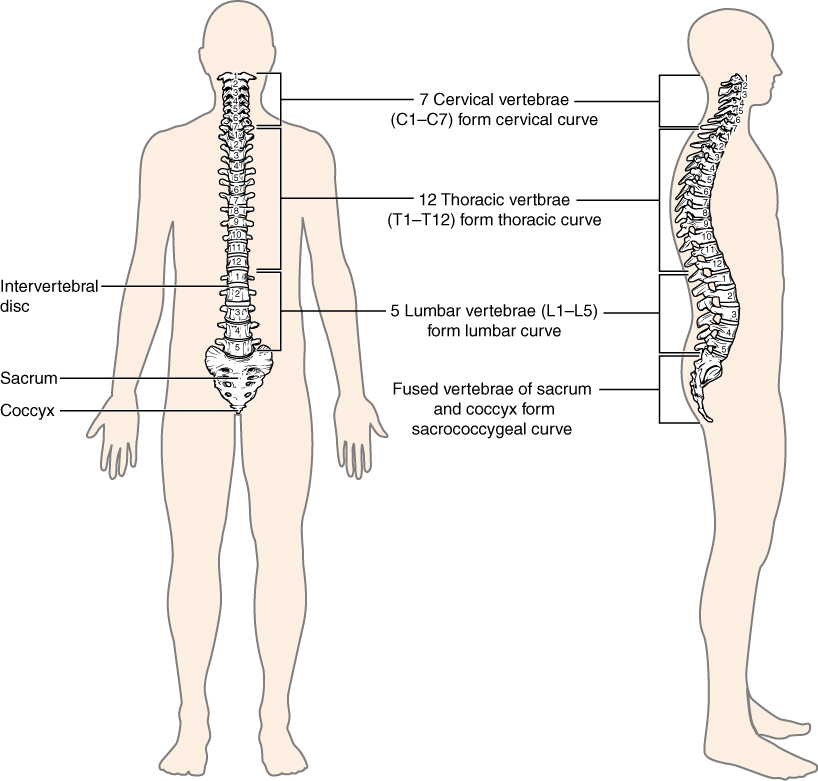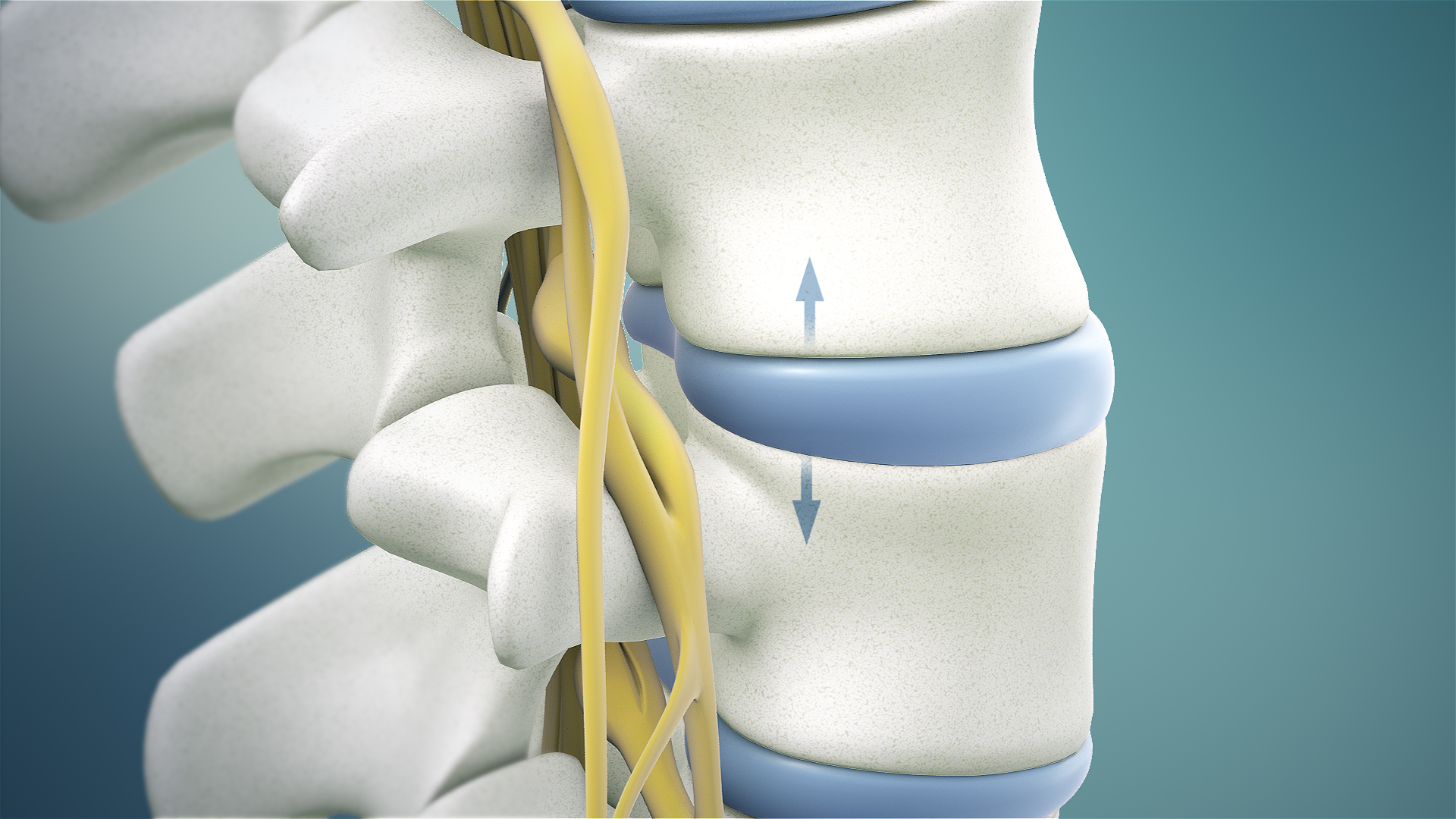|
Artificial Facet Replacement
An artificial facet replacement is a joint prosthesis intended to replace the natural Zygapophysial joint, facets and other posterior elements of the spine, restoring normal (or near-normal) motion while providing stabilization of spinal segments. It is typically used as an adjunct to laminectomy, laminotomy, Spinal decompression, neural decompression, and facetectomy, in lieu of standard lumbar Spinal fusion, fusion. The prosthesis is indicated for back and leg pain caused by central or lateral spinal stenosis, degenerative disease of the facets with instability, and grade 1 degenerative spondylolisthesis with objective evidence of neurological impairment. History Patents related to facet replacement have been around since the 1980s; more intense research into artificial facet replacement as an effective and marketable prosthesis has been ongoing since the mid-2000s. Prominent researched options include: * ACADIA: a facet replacement implant "designed to reproduce facet motion whi ... [...More Info...] [...Related Items...] OR: [Wikipedia] [Google] [Baidu] |
Prosthesis
In medicine, a prosthesis (: prostheses; from ), or a prosthetic implant, is an artificial device that replaces a missing body part, which may be lost through physical trauma, disease, or a condition present at birth (Congenital, congenital disorder). Prostheses may restore the normal functions of the missing body part, or may perform a cosmetic function. A person who has undergone an amputation is sometimes referred to as an Amputation, amputee, however, this term may be offensive. Rehabilitation for someone with an amputation is primarily coordinated by a Physical medicine and rehabilitation, physiatrist as part of an inter-disciplinary team consisting of physiatrists, prosthetists, nurses, physical therapists, and occupational therapists. Prostheses can be created by hand or with computer-aided design (CAD), a software interface that helps creators design and analyze the creation with computer-generated Technical drawing, 2-D and 3D computer graphics, 3-D graphics as well as an ... [...More Info...] [...Related Items...] OR: [Wikipedia] [Google] [Baidu] |
Zygapophysial Joint
The facet joints (also zygapophysial joints, zygapophyseal, apophyseal, or Z-joints) are a set of synovial, plane joints between the articular processes of two adjacent vertebrae. There are two facet joints in each spinal motion segment and each facet joint is innervated by the recurrent meningeal nerves. Innervation Innervation to the facet joints vary between segments of the spinal, but they are generally innervated by medial branch nerves that come off the dorsal rami. It is thought that these nerves are for primary sensory input, though there is some evidence that they have some motor input local musculature. Within the cervical spine, most joints are innervated by the medial branch nerve (a branch of the dorsal rami) from the same levels. In other words, the facet joint between C4 and C5 vertebral segments is innervated by the C4 and C5 medial branch nerves. However, there are two exceptions: # The facet joint between C2 and C3 is innervated by the third occipital n ... [...More Info...] [...Related Items...] OR: [Wikipedia] [Google] [Baidu] |
Laminectomy
A laminectomy is a surgical procedure that removes a portion of a vertebra called the Lamina of the vertebral arch, lamina, which is the roof of the spinal canal. It is a major spine operation with residual scar tissue and may result in postlaminectomy syndrome. Depending on the problem, more conservative treatments (e.g., small endoscopic procedures, without bone removal) may be viable. Method The lamina is a posterior arch of the vertebral bone lying between the spinous process (which juts out in the middle) and the more lateral pedicles and the transverse processes of each vertebra. The pair of laminae, along with the Vertebra, spinous process, make up the posterior wall of the bony spinal canal. Although the literal meaning of laminectomy is 'excision of the lamina', a conventional laminectomy in neurosurgery and orthopedics involves excision of the supraspinous ligament and some or all of the spinous process. Removal of these structures with an open technique requires dis ... [...More Info...] [...Related Items...] OR: [Wikipedia] [Google] [Baidu] |
Laminotomy
A laminotomy is an orthopaedic neurosurgery, neurosurgical procedure that removes part of the lamina of the vertebral arch, lamina of a vertebral arch in order to relieve pressure in the vertebral canal. A laminotomy is less invasive than conventional vertebral column surgery techniques, such as laminectomy because it leaves more ligaments and muscles attached to the spinous process intact and it requires removing less bone from the vertebra. As a result, laminotomies typically have a faster recovery time and result in fewer postoperative complications. Nevertheless, possible risks can occur during or after the procedure like infection, hematomas, and dural tears. Laminotomies are commonly performed as treatment for lumbar spinal stenosis and Spinal disc herniation, herniated disks. MRI and CT scans are often used pre- and post surgery to determine if the procedure was successful. Anatomy overview The spinal cord is housed in a bony hollow tube called the vertebral column. ... [...More Info...] [...Related Items...] OR: [Wikipedia] [Google] [Baidu] |
Spinal Decompression
Spinal decompression is the relief of pressure on the spinal cord or on one or more compressed nerve roots passing through or exiting the spinal column. Decompression of the spinal neural elements is a key component in treating spinal radiculopathy, myelopathy and claudication. Surgical methods Decompression of nerve roots When a single spinal nerve root is compressed, the resulting clinical outcome is termed radiculopathy, and is usually labeled according to the specific nerve root compressed (hence compression of the nerve root exiting the spinal column below the left-sided pedicle of the L5 vertebra will be diagnosed as "left L5 radiculopathy"). Microdiscectomy (or microdecompression) is a minimally invasive surgical procedure in which a portion of a herniated nucleus pulposus is removed by way of a surgical instrument. The purpose of this procedure is to relieve the pressure and reduce the local inflammatory reaction around a nerve root, caused by the herniated nucleus pu ... [...More Info...] [...Related Items...] OR: [Wikipedia] [Google] [Baidu] |
Facetectomy
Facetectomy is a surgical procedure Surgery is a medical specialty that uses manual and instrumental techniques to diagnose or treat pathological conditions (e.g., trauma, disease, injury, malignancy), to alter bodily functions (e.g., malabsorption created by bariatric surgery s ... which involves decompression of a spinal nerve root. For example, it can be performed in severely resistant cases of cervical rhizalgia, where the cervical nerve roots within the intervertebral foramina are decompressed. References Neurosurgery Surgical removal procedures {{surgery-stub ... [...More Info...] [...Related Items...] OR: [Wikipedia] [Google] [Baidu] |
Spinal Fusion
Spinal fusion, also called spondylodesis or spondylosyndesis, is a surgery performed by Orthopedic surgery#Practice, orthopaedic surgeons or neurosurgeons that joins two or more vertebrae. This procedure can be performed at any level in the spine (cervical, thoracic, lumbar, or sacral) and prevents any movement between the fused vertebrae. There are many types of spinal fusion and each technique involves using bone grafting—either from the patient (autotransplantation, autograft), donor (allograft), or artificial bone substitutes—to help the bones heal together. Additional hardware (screws, plates, or Interbody fusion cage, cages) is often used to hold the bones in place while the graft fuses the two vertebrae together. The placement of hardware can be guided by fluoroscopy, Computer-assisted surgery, navigation systems, or Robot-assisted surgery, robotics. Spinal fusion is most commonly performed to relieve the pain and pressure from mechanical pain of the vertebrae or on th ... [...More Info...] [...Related Items...] OR: [Wikipedia] [Google] [Baidu] |
Spinal Stenosis
Spinal stenosis is an abnormal narrowing of the spinal canal or neural foramen that results in pressure on the spinal cord or nerve roots. Symptoms may include pain, numbness, or weakness in the arms or legs. Symptoms are typically gradual in onset and improve with leaning forward. Severe symptoms may include loss of bladder control, loss of bowel control, or sexual dysfunction. Causes may include osteoarthritis, rheumatoid arthritis, spinal tumors, trauma, Paget's disease of the bone, scoliosis, spondylolisthesis, and the genetic condition achondroplasia. It can be classified by the part of the spine affected into cervical, thoracic, and lumbar stenosis. Lumbar stenosis is the most common, followed by cervical stenosis. Diagnosis is generally based on symptoms and medical imaging. Treatment may involve medications, bracing, or surgery. Medications may include NSAIDs, acetaminophen, anticonvulsants ( gabapentinoids) or steroid injections. Stretching and strengthen ... [...More Info...] [...Related Items...] OR: [Wikipedia] [Google] [Baidu] |
Spondylolisthesis
Spondylolisthesis is when one spinal vertebra slips out of place compared to another. While some medical dictionaries define spondylolisthesis specifically as the forward or anterior displacement of a vertebra over the vertebra inferior to it (or the sacrum), it is often defined in medical textbooks as displacement in any direction.Introduction to chapter 17 in: Page 250 in: Spondylolisthesis is graded based upon the degree of slippage of one vertebral body relative to the subsequent adjacent vertebral body. Spondylolisthesis is classified as one of the six major etiologies: degenerative, traumatic, dysplastic, wikt:isthmic, isthmic, pathologic, or post-s ... [...More Info...] [...Related Items...] OR: [Wikipedia] [Google] [Baidu] |
Clinical Trial
Clinical trials are prospective biomedical or behavioral research studies on human subject research, human participants designed to answer specific questions about biomedical or behavioral interventions, including new treatments (such as novel vaccines, pharmaceutical drug, drugs, medical nutrition therapy, dietary choices, dietary supplements, and medical devices) and known interventions that warrant further study and comparison. Clinical trials generate data on dosage, safety and efficacy. They are conducted only after they have received institutional review board, health authority/ethics committee approval in the country where approval of the therapy is sought. These authorities are responsible for vetting the risk/benefit ratio of the trial—their approval does not mean the therapy is 'safe' or effective, only that the trial may be conducted. Depending on product type and development stage, investigators initially enroll volunteers or patients into small Pilot experiment, pi ... [...More Info...] [...Related Items...] OR: [Wikipedia] [Google] [Baidu] |
Engineering Validation Test
An engineering verification test (EVT) is performed on first engineering prototypes, to ensure that the basic unit performs to design goals and specifications. Verification ensures that designs meets requirements and specification while validation ensures that created entity meets the user needs and objectives. Tests Tests may include: * Functional test (basic) * Power measurement * Signal quality test * Conformance test * Electromagnetic interference (EMI) pre-scan * Thermal and four-corner test * Basic parametric measurements, specification verification Importance Identifying design problems and solving them as early in the design cycle as possible is a key to keeping projects on time and within budget. Too often, product design and performance problems are not detected until late in the product development cycle, when the product is ready to be shipped. Prototyping In the prototyping stage, engineers create actual working samples of the product they plan to produce. Engin ... [...More Info...] [...Related Items...] OR: [Wikipedia] [Google] [Baidu] |








